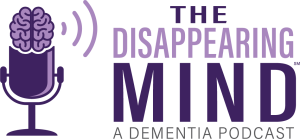For older adults, maintaining a healthy lipid profile is crucial, especially in the context of dyslipidemia in seniors, a condition that poses significant health risks by increasing the likelihood of heart diseases and strokes. Dyslipidemia is characterized by an imbalance in the lipid profile, such as high levels of bad cholesterol (LDL) or low levels of good cholesterol (HDL). As individuals age, it becomes increasingly important to manage and understand how to prevent this condition to ensure overall health and well-being.
At our senior living, we believe in empowering our residents to lead healthy and fulfilling lives, and dyslipidemia in older adults is a topic we tackle with fervor. Our team creates comprehensive wellness programs that address the root causes of conditions like dyslipidemia — poor diet, lack of exercise, and genetic predisposition.
Recognize the Importance of Regular Lipid Profile Screenings for Seniors
Regular screenings are the first and vital step in managing dyslipidemia. These tests reveal cholesterol levels, guiding older adults and their care teams in retirement communities to make informed decisions about their health routines. Staying ahead with these screenings helps detect changes early on, allowing for adjustments before more serious complications arise. It acts as a preventive measure, offering a glimpse into the cardiovascular health of the resident, and sets the stage for proactive management of their lipid levels.
Awareness and education about the significance of these regular check-ups can encourage a routine health monitoring culture within retirement communities. Ensuring that all residents undergo periodic screenings as part of their healthcare plan can significantly impact the general health status of the community, promoting longer, healthier lives.
Implement a Balanced Diet Rich in Fiber and Healthy Fats
A balanced diet plays a crucial role in managing dyslipidemia. It involves consuming foods high in fiber and healthy fats while reducing the intake of saturated fats and sugars. Foods like fruits, vegetables, whole grains, and fish contribute to maintaining normal cholesterol levels and promote heart health.
In retirement communities, offering meals that align with these dietary guidelines can help residents manage their lipid profiles. It’s about reducing harmful items and incorporating nutritious alternatives that provide essential nutrients without compromising taste.
Incorporate Regular Physical Activity to Decrease LDL Cholesterol Levels
Physical activity is another cornerstone in managing dyslipidemia. It helps lower ‘bad’ LDL cholesterol and increase ‘good’ HDL cholesterol. Encouraging a moderate exercise routine, such as walking, swimming, or cycling, can significantly affect heart health for older adults.
Retirement communities can play a significant role in fostering an environment where physical activity is accessible and encouraged. Organizing group activities, providing safe spaces for exercise, and personalizing routines for those with mobility issues can support residents in maintaining an active lifestyle, which is crucial for managing dyslipidemia.
Manage Weight Proactively to Reduce the Risk of Dyslipidemia
Weight management is closely linked to healthy lipid levels. Excess weight can increase the risk of dyslipidemia, making it essential for older adults to monitor and maintain a healthy weight. A combination of a balanced diet and regular physical activity is effective in achieving this goal.
In retirement communities, personalized care plans that include nutritional counseling and fitness programs can help residents manage their weight. Professional guidance from dietitians and fitness coaches can provide residents with the knowledge and tools they need to succeed, improving their lipid profiles and overall quality of life.
Leveraging Our Senior Living Programs for Healthier Lifestyles
Our senior living programs play an instrumental role in providing a balanced lifestyle for our residents. We meticulously design these programs to incorporate healthy dietary habits and active living, thus effectively managing dyslipidemia risks. Our community promotes a hearty blend of preventive healthcare measures alongside engaging activities that enhance the residents’ overall quality of life.







